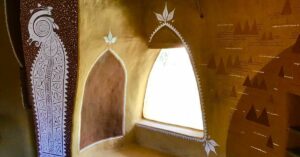Delhi Architect Uses Jaali & Physics To Build Hostel, Cuts Heat Radiation By 70%
Delhi-based Sachin Rastogi, director and principal of ZED Lab, built a hostel that is the epitome of an amalgamation of traditional and modern architectural aspects.
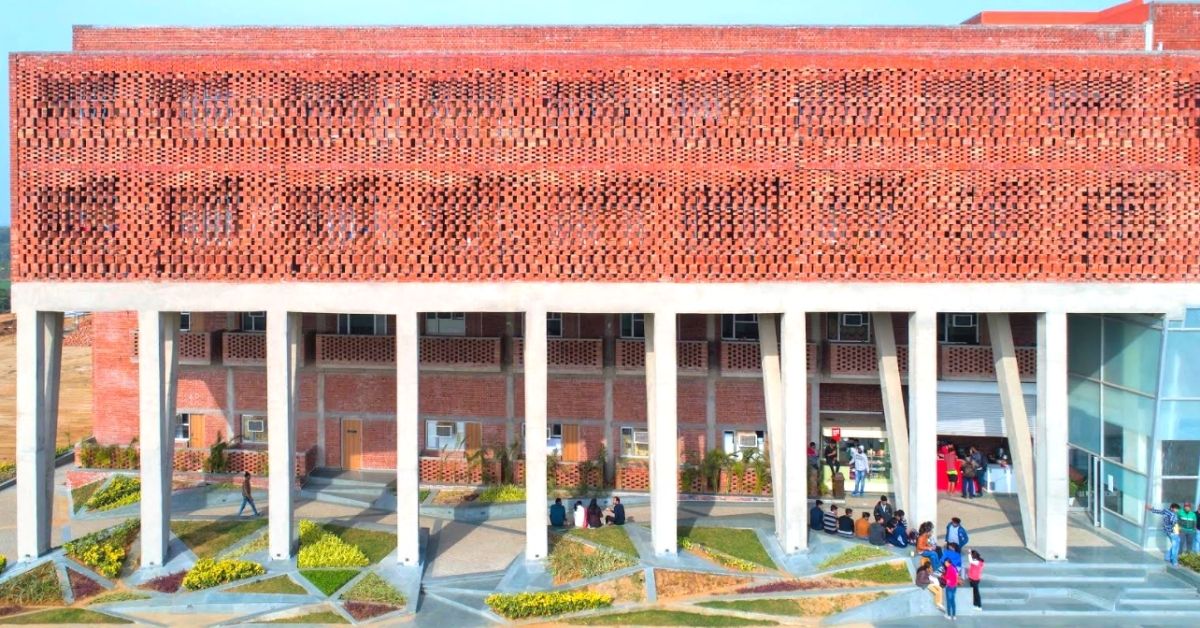
Sachin Rastogi, director and principal of Zero Energy Design Lab (ZED Lab), strongly believes that it does not take special efforts to incorporate designs that make a building sustainable.
For him and his Delhi-based firm, the quality of life is improved when every stakeholder, including the environment, benefits. This responsible practice is reflected in all their architectural projects, from residential to hospitality, institutional and commercial ones.
The firm, which was founded in 2009, specialises in blending vernacular designs with latest techniques of passive cooling to create low energy buildings.

“If we trace our history, we can observe the impact of vernacular architecture on community living. We see the relevance of eco-friendly architecture as a response to the contextual and environmental issues of cooling and ventilation, daylighting, etc. Comfort, and not a luxury, was the overarching idea. If we fail to imbibe and incorporate our age-old building processes for contemporary needs, we will inevitably exhaust our natural resources and will have to find ways to tackle greenhouse emissions and the ever-worsening climate emergency that we have all created for ourselves,” Sachin, an alumni of Architectural Association (AA) School of Architecture, London, tells The Better India.

The St Andrews Boys’ Hostel in Gurugram is the epitome of an amalgamation of traditional and modern architectural aspects of comfort and elegance.
The building that houses 360 students was built in 2017.
With special emphasis given on natural ventilation, light and using techniques like the stack effect, and exposed brickwork, Sachin and his team saved on both capital and maintenance costs of the building.
“The typical cost for constructing such a building is around Rs 1800-2200 per sqft; however, we executed the project in as low as Rs 1500/sqft,” informs Sachin.
Building A Cost-Effective Sustainable Building
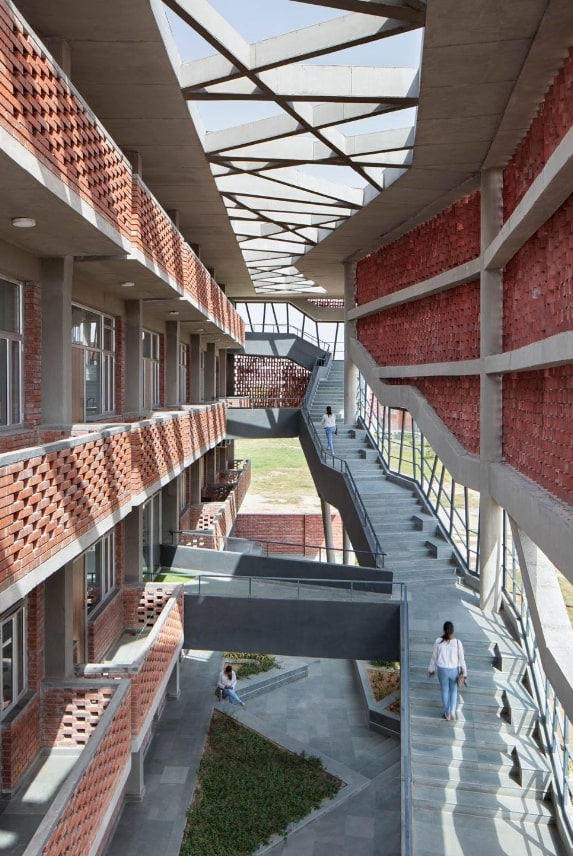
The building’s foremost attraction lies in the exterior facade work or what is known as ‘jaali’ in the traditional sense. Apart from being visually appealing, the jaali provides thermal insulation and the penetration of natural light.
The jaali’s composition is done in a way that reduces the heat energy of direct radiations by 70 per cent, thus providing comfortable and habitable spaces.
Pictorial Depiction Of The Workings Of The Hostel
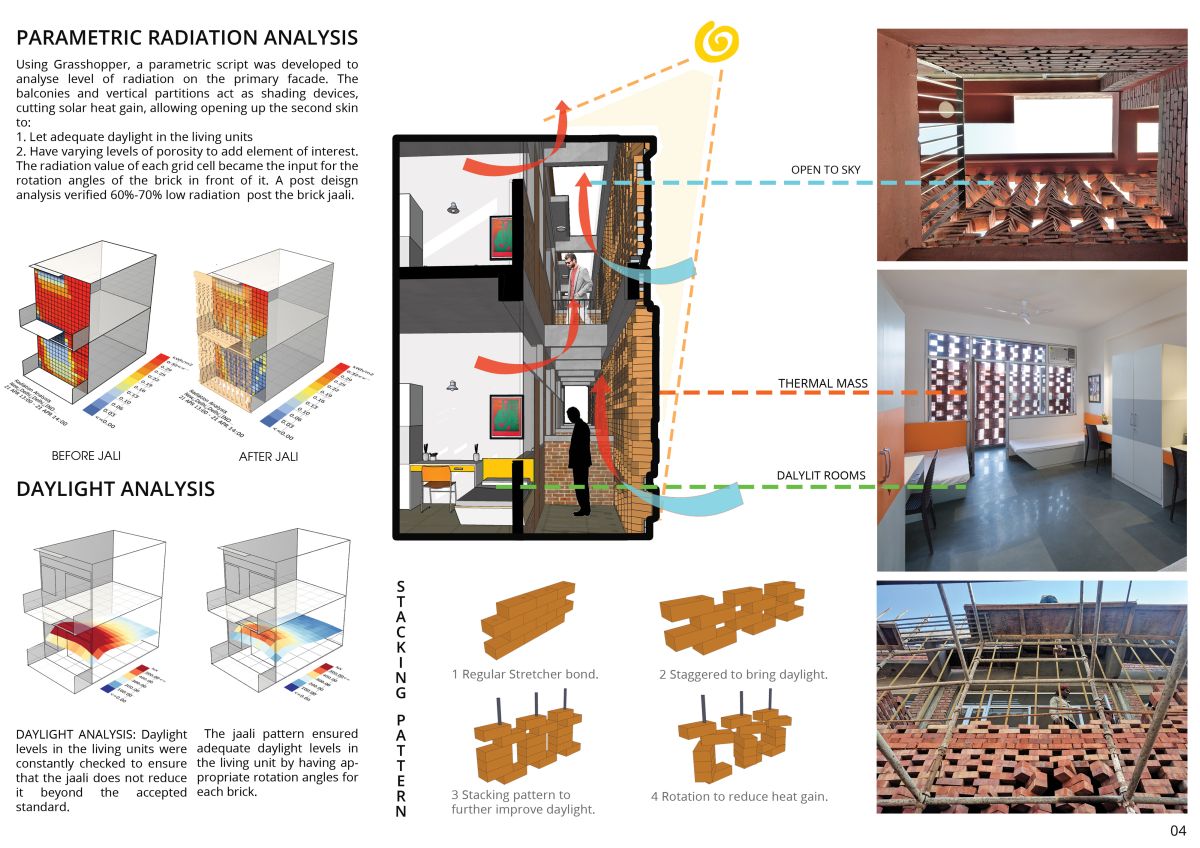
The facade not only reduced the overall construction cost but also promoted sustainable construction. For instance, by sourcing the brick locally, the team saved on the transportation cost and reduced their carbon footprint.
“We reinforced the second skin with steel bars to do away with the mortar required for bricklaying. Ready-mix concrete (RMC) for both slab and columns also helped in minimising on-site concrete wastage,” he adds.
Additionally, the balconies also have brickwork that act as a buffer zone between indoor and outdoor spaces.
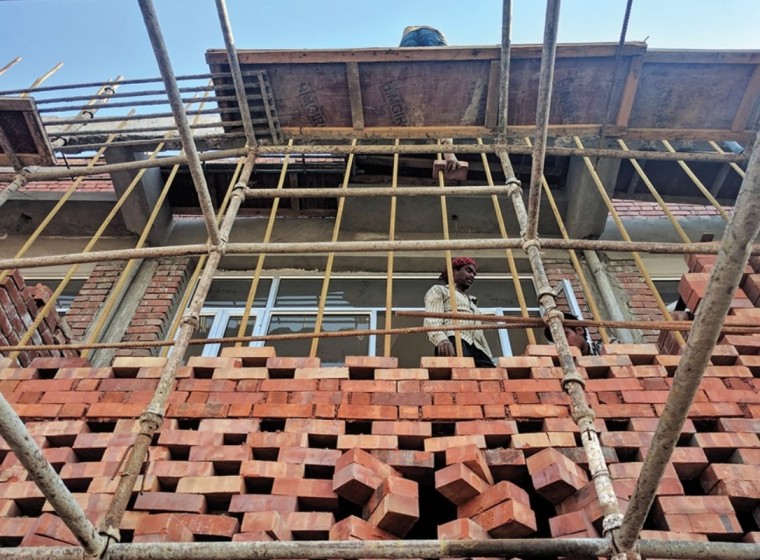
Another notable feature of the hostel building is a physics principle called ‘stack effect’, in the contorted central atrium, which allows natural light to penetrate deeper into the building.
It also acts as a solar chimney that facilitates ventilation in the building through the stack effect. The concept uses temperature differences to move air. The building captures hot air and releases it outdoors. This is a lesser-used but a simple passive cooling method.
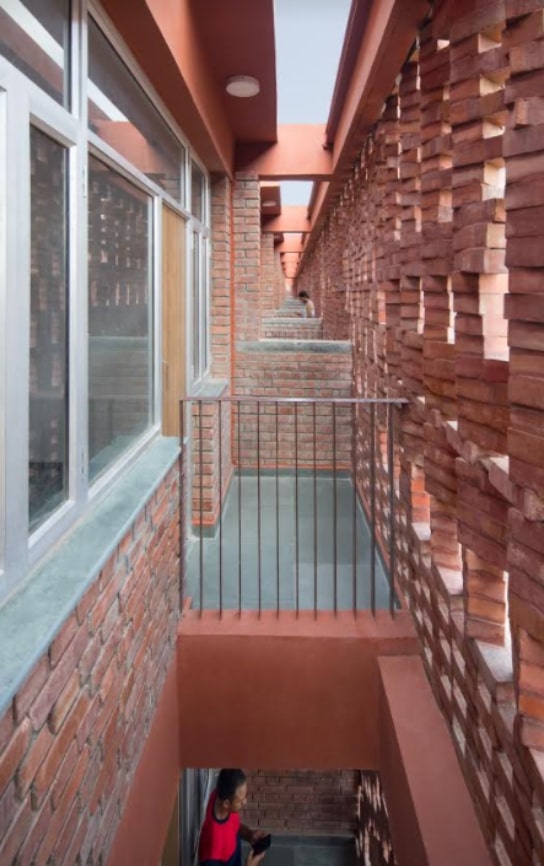
Happy with the outcome, Rohit Rana, vice-chairperson, St. Andrews Institute says, “The idea of double-height balconies and the atrium works very well for students as they use them as effective breakout spaces. It has enhanced interaction and bonding amongst the students, which is the central idea of any educational-cum-residential campus. The jaali is a simple yet effective means to provide shade to the building.”
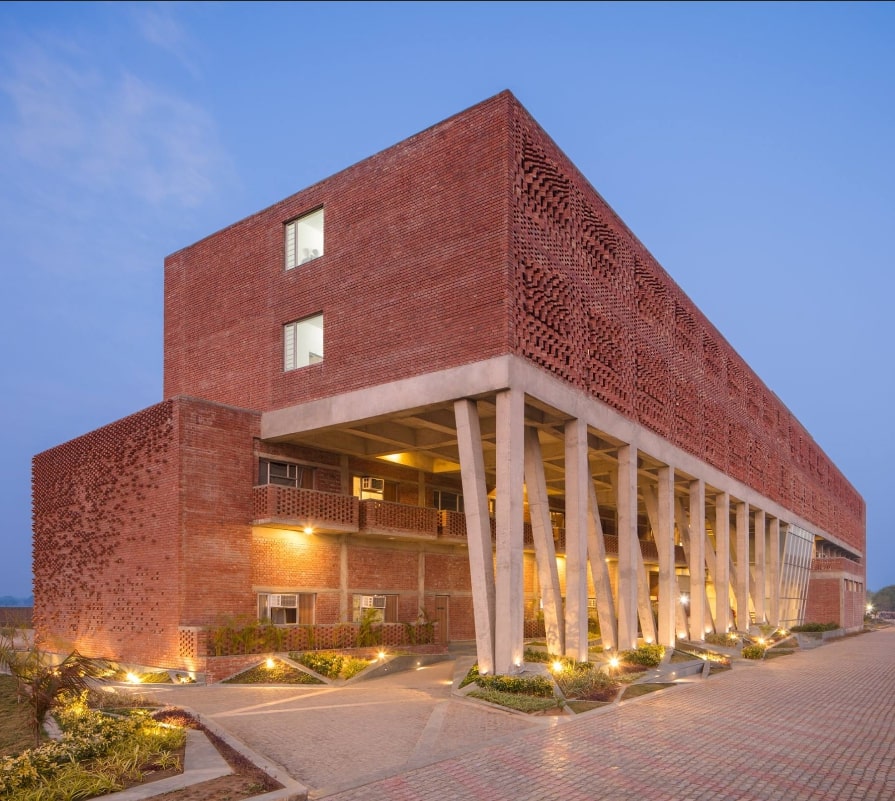
These passive cooling design techniques of the building keep the interior cooler, thus reducing the air-conditioning demand of the building by 40 per cent.
Image credits: Andre J Fanthome
Edited by Yoshita Rao
If you found our stories insightful, informative, or even just enjoyable, we invite you to consider making a voluntary payment to support the work we do at The Better India. Your contribution helps us continue producing quality content that educates, inspires, and drives positive change.
Choose one of the payment options below for your contribution-
By paying for the stories you value, you directly contribute to sustaining our efforts focused on making a difference in the world. Together, let's ensure that impactful stories continue to be told and shared, enriching lives and communities alike.
Thank you for your support. Here are some frequently asked questions you might find helpful to know why you are contributing?


This story made me
-
97
-
121
-
89
-
167




